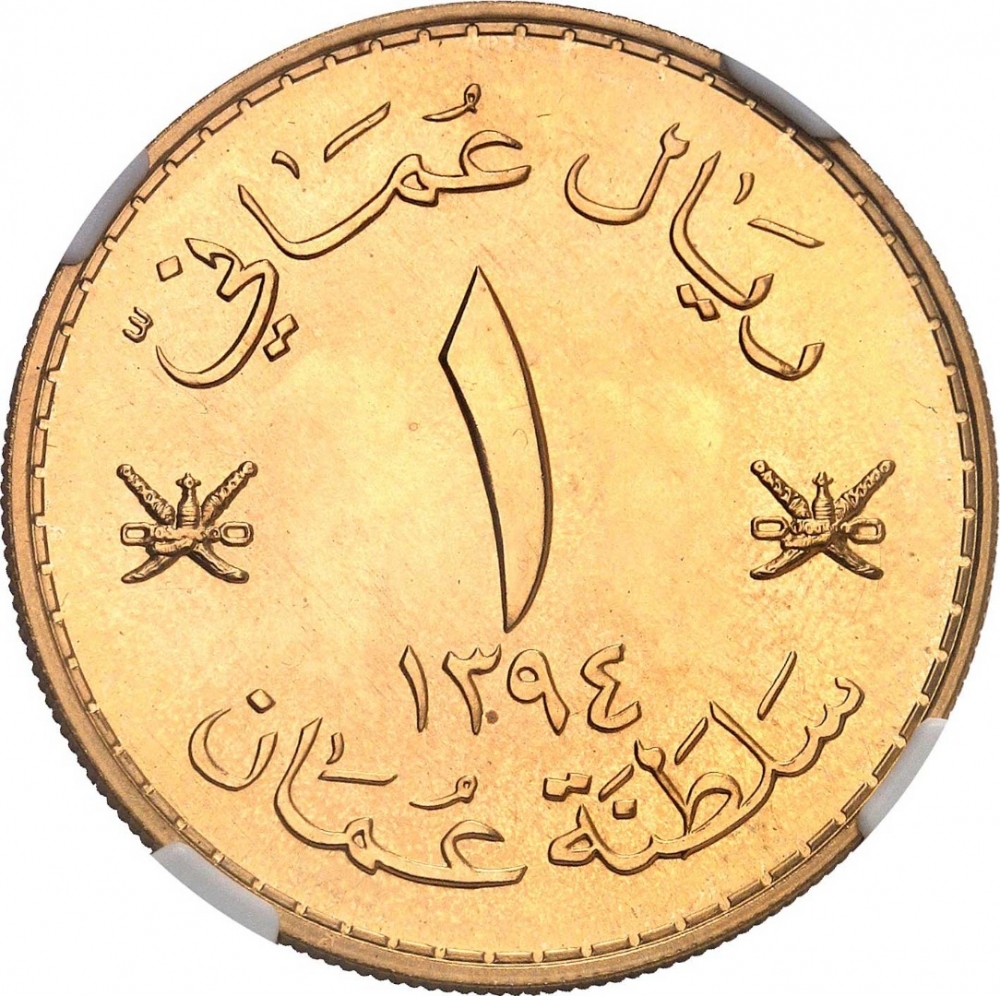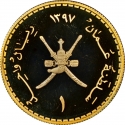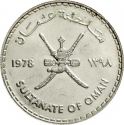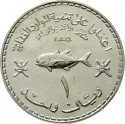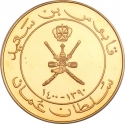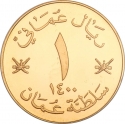You are about to finish your registration. Please check your mailbox (including spam folder). There should be a letter with a confirmation link. Check setting to make sure that your e-mail address is correct.
Send letter againDescription
Qaboos bin Said Al Said (1940–2020) was the Sultan of Oman from 23 July 1970 until his death. A fifteenth-generation descendant of the founder of the House of Al Said, he was the longest-serving leader in the Middle East and Arab world at the time of his death.
Obverse

|
National Emblem of Oman, surrounded by the inscription "Qaboos bin Said Sultan of Oman" within circle surrounded stars and crescents. قابوس بن سعيد |
|---|---|
Reverse

|
Legend "Omani Rial" above numeral value between small arms, date and country name below. ريال عماني |
| Edge |

